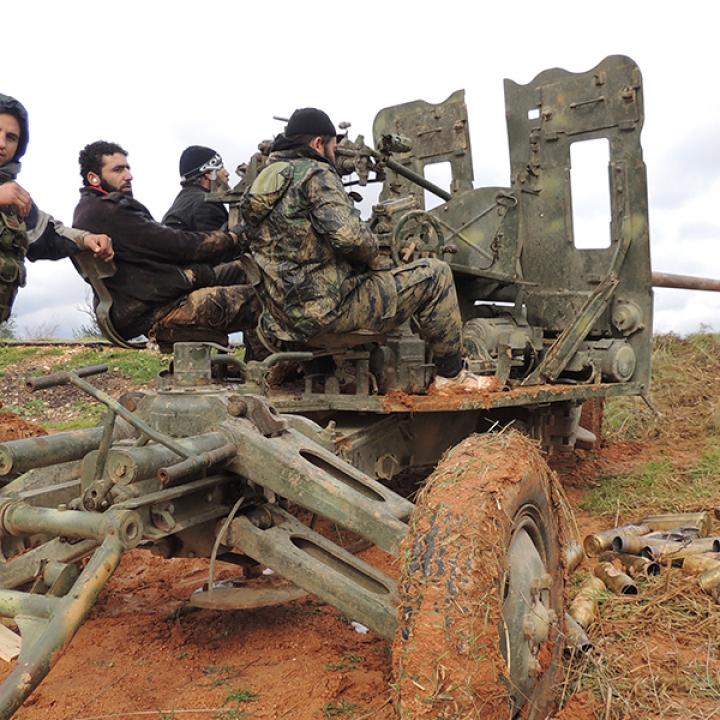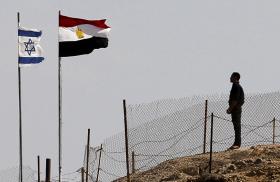

Ostensibly convened to develop a political solution to the five-year old Syrian crisis, the Geneva III talks were based on deceit. While diplomatic teams from major world capitals wrangled over the minutiae of the negotiation process, Moscow was preparing a major air and special forces offensive against opposition-held territory in and around Aleppo in conjunction with the Syrian regime’s military. This offensive is supplemented with considerable support from Iranian-managed Lebanese, Iraqi, and other assorted militias ready to reap the benefits of the weakened opposition defenses. And indeed, when the much hyped, albeit visibly hollow talks opened, Russian action had changed the facts on the ground in areas that the regime had striven and failed to penetrate for years, leaving the charade of negotiations still-born.
This new installment of the Syrian tragedy has considerable implications for the future of Syria as well as the stability of the region and the international order. Were Aleppo to fall, the path would be set for the Syrian regime to secure much of the strategically useful areas of Syria. In an apparent attempt to ensure this ambition’s success, Russia is now applying elements of strategy from its playbook of the second Chechan war in the Syrian theater. Overwhelming force coupled with open disregard for human rights is intended to convince the opposition that submission is the only alternative to death. Moscow has alluded to the idea that the restoration of the regime’s grip would trigger the adoption of political “reform” measures for decorum. Compliant “opposition” personalities are now being curated in Moscow to help prepare for this “reform” to take place, while a return in full force of the security apparatus would seek to weed out the many networks of militancy and radicalism which have implanted themselves in the population. Beyond “useful Syria,” the territories under “Islamic State” (ISIS) control would remain subject to open warfare until this pseudo-state collapses under the multiple pressure points exerted on it.
While the current momentum appears to favor this scenario, severe defects in the conceptions lying behind the plan doom it to a near-certain failure. Damascus is not Moscow, and the Syrian opposition groups are not Chechen separatists.
Even as a beleaguered ex-superpower, the Russian Federation in the 1990s still maintained a formidable military, to which the rag-tag Chechen militias were no match. As a miniscule, land-locked territory, Chechnya had neither the demographic, economic, nor strategic ability to stand up to Russia’s might. Syria’s power equation is dramatically different. Despite denials still steeped in the fiction of Zionist-imperialist conspiracies, the fight in Syria is one that has pitted most of the Syrian Sunni population against a regime almost completely identified with the minority Alawite community. Since the Sunnis constitute the absolute majority in both Syria and its surrounding countries, the objective balance of strength is not in the regime’s favor. Without its external backers, most of whom were recruited on sectarian bases that exacerbate the Sunni-Alawite divide, the regime would not have survived to see the battle of Aleppo. Its ability to maintain its gains will depend on the availability and consistency of the support it receives from Russia and Iran. The sustainability of such support is far from guaranteed.
Furthermore, in the Russian-Chechen confrontation, in spite of overwhelming odds in its favor, Russia did not resolve its Chechnya problem. It merely exported the issue by internally diluting it. Radicalism, once confined to Chechnya, has now reached Russia’s Muslim populations in Daghestan, Tatarstan, and territories beyond. Meanwhile, Chechen jihadists lend their expertise and ruthlessness to radical factions across Syria and Iraq. If Russia indulges the Damascus regime in a victory over its Sunni population, the international community can expect a repetition of the Chechen “success” on a greater magnitude.
It is no surprise to many in Syria and beyond that, in the pursuit of a military solution, Damascus, Moscow, and Tehran have displayed a blatant disregard of the suffering and death inflicted on Syrians. For anti-regime activists, the United States’ apparently complicit position is more difficult to understand. For much of 2015, non-ISIS opposition achieved a series of field victories, nearly pushing the regime to the brink of collapse. Yet not only were these military gains handicapped by the U.S. rejection of allies’ requests to permit the supply of qualitative military hardware to the opposition, but also by an apparent U.S. indecision on a strategic course that ultimately allowed Russia to irrevocably take the lead.
What militants, activists, and opposition figures have since reported is an astonishing new U.S. decisiveness at demanding opposition compliance to the Russian approach — despite the U.S. administration’s deeply informed conviction of the Russian adventure’s recklessness. The pressure exerted by U.S. Secretary of State John Kerry on opposition factions to participate in the solemnly fallacious Geneva III talks and his alleged admonishment of the opposition for not sparing Aleppo the fate slated for it by the Russians are called on as indications of U.S. complicity in the Russian endeavor.
Was Geneva III a trap made by Moscow for Washington, or was it a trap made by Moscow and Washington for the Syrian opposition? In light of the many gyrations of U.S. foreign policy in the past few years, it is not far-fetched to assume the former. But the conviction in the Middle East within Sunni circles is that it is the latter, leaving these circles wide open for new heights of radicalization.
While Russians engage in hard kinetics, it seems that the U.S. administration is even failing to manage soft optics. Nothing short of a principled U.S. stand, asserting values and convictions, and backing the assertions with the will to have international justice prevail, will restore the deeply wounded gravitas of the United States, and will secure with it US national interests and global stability.


